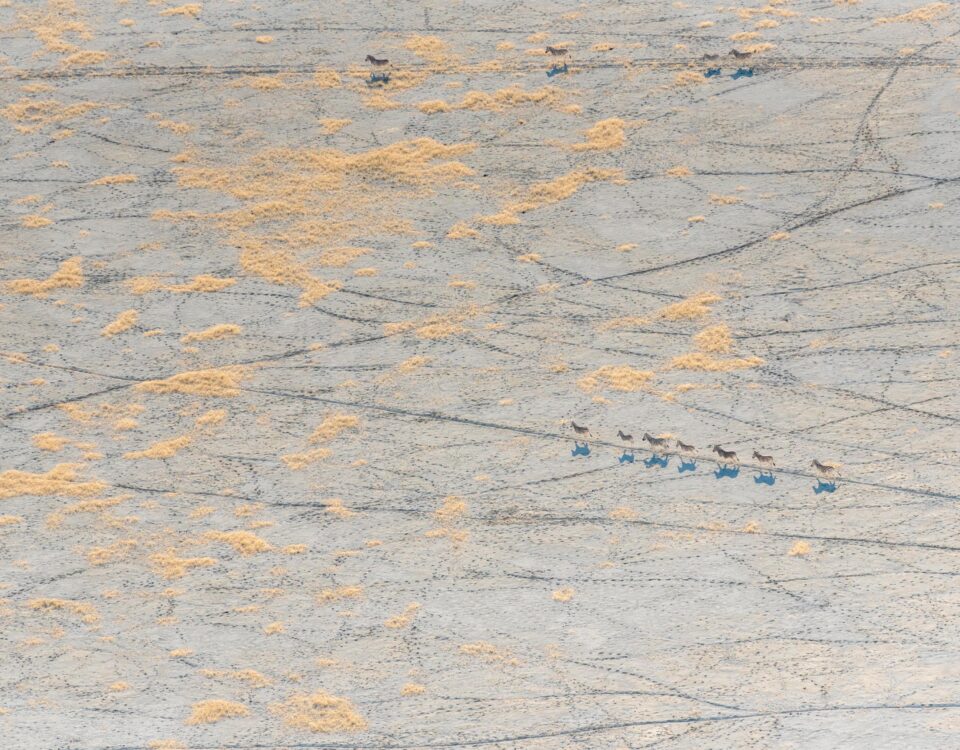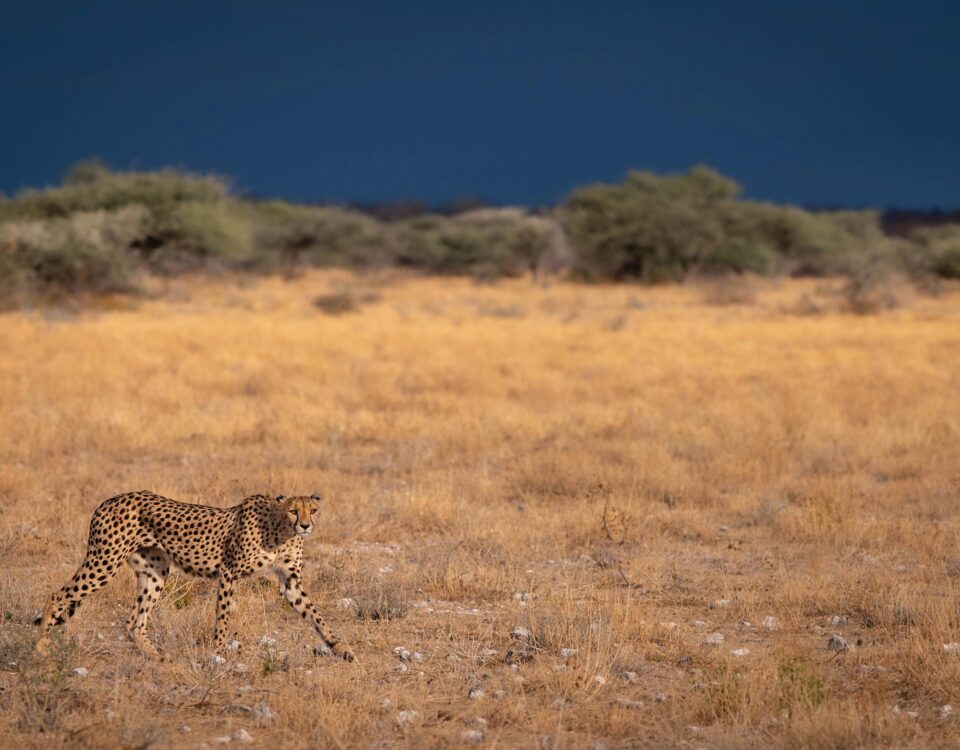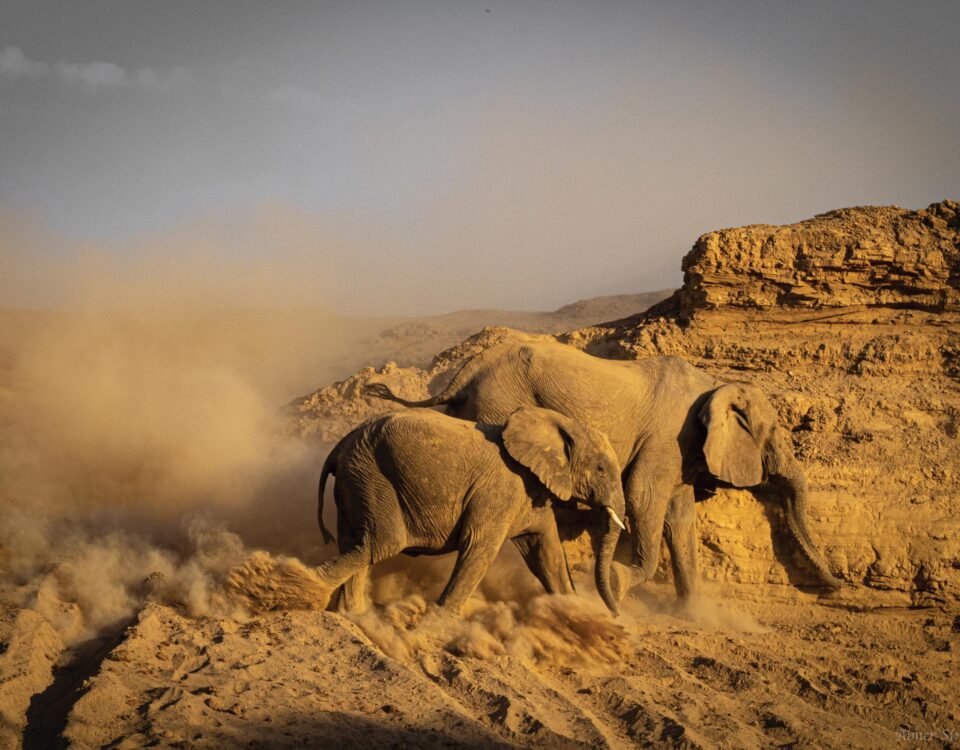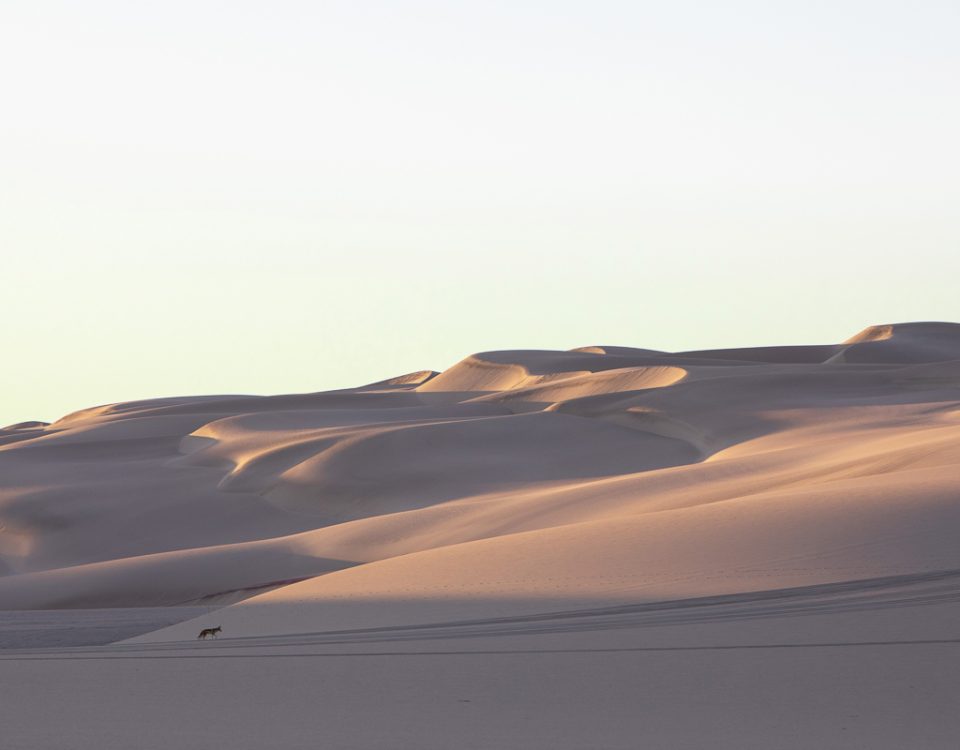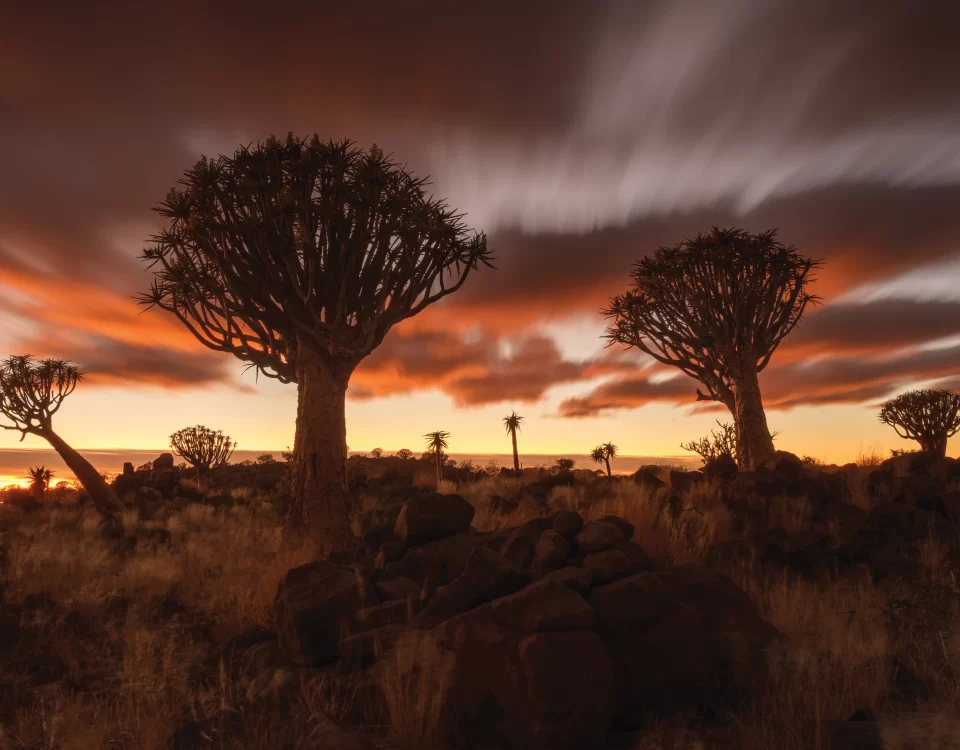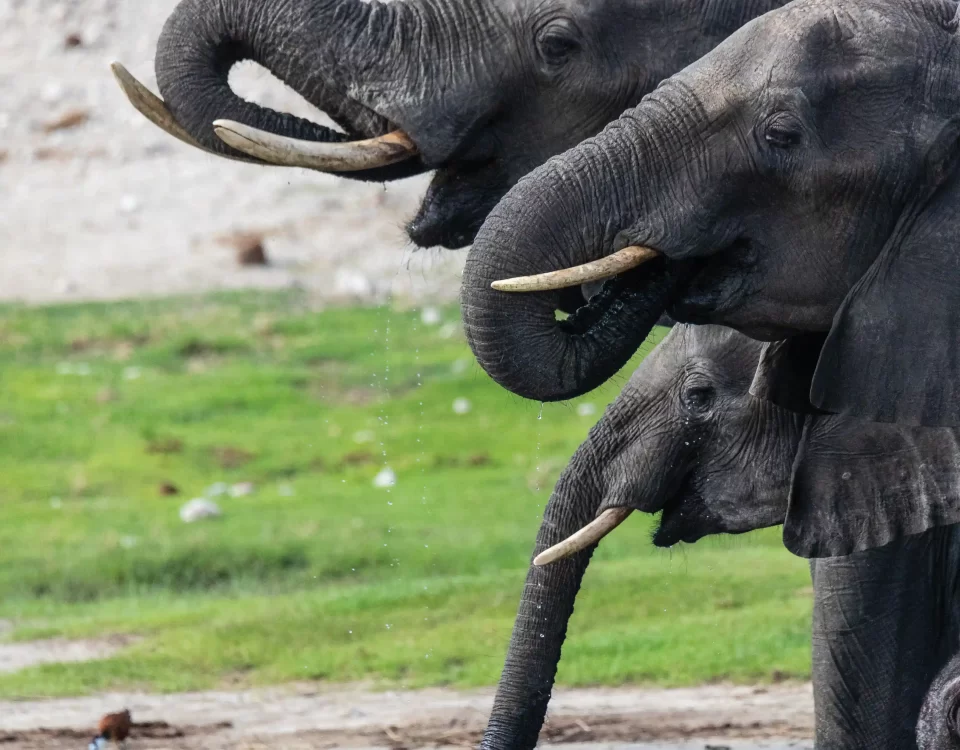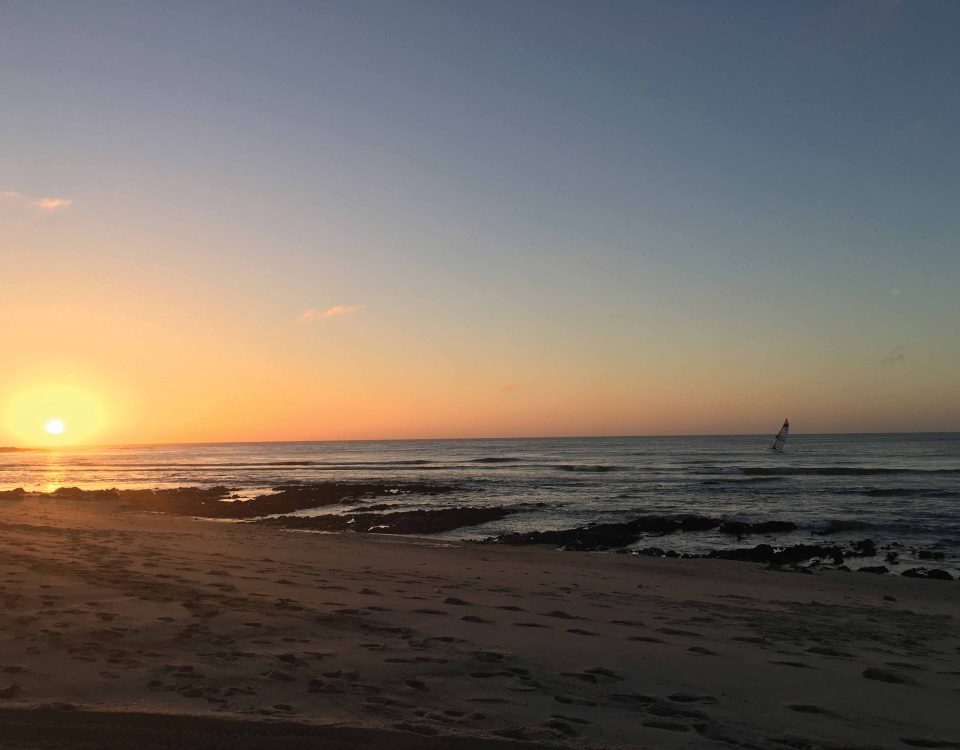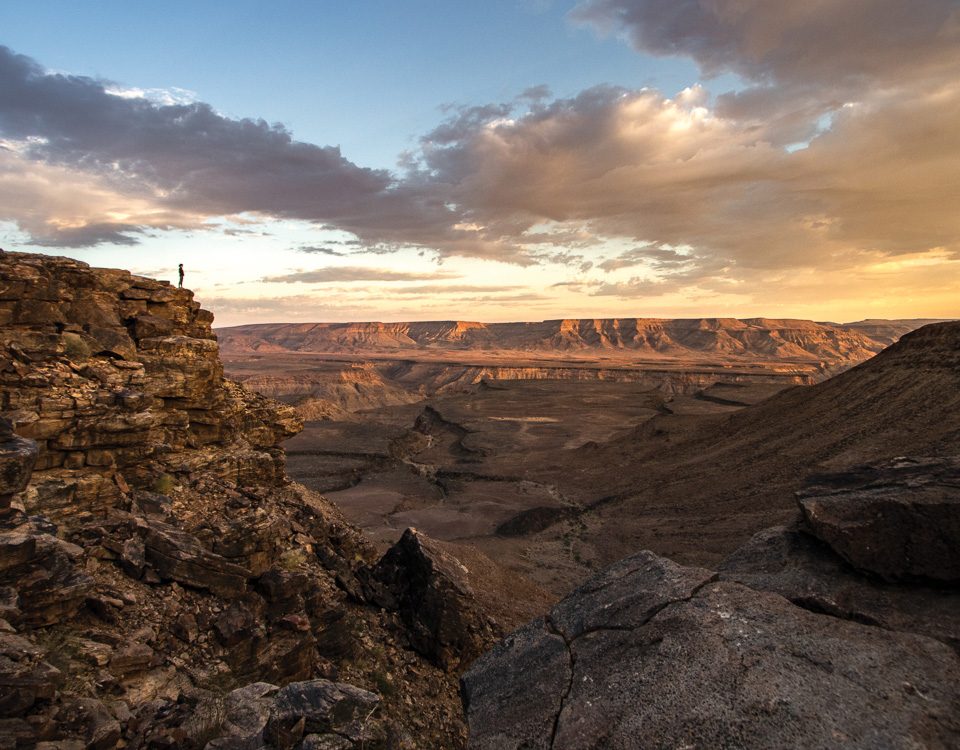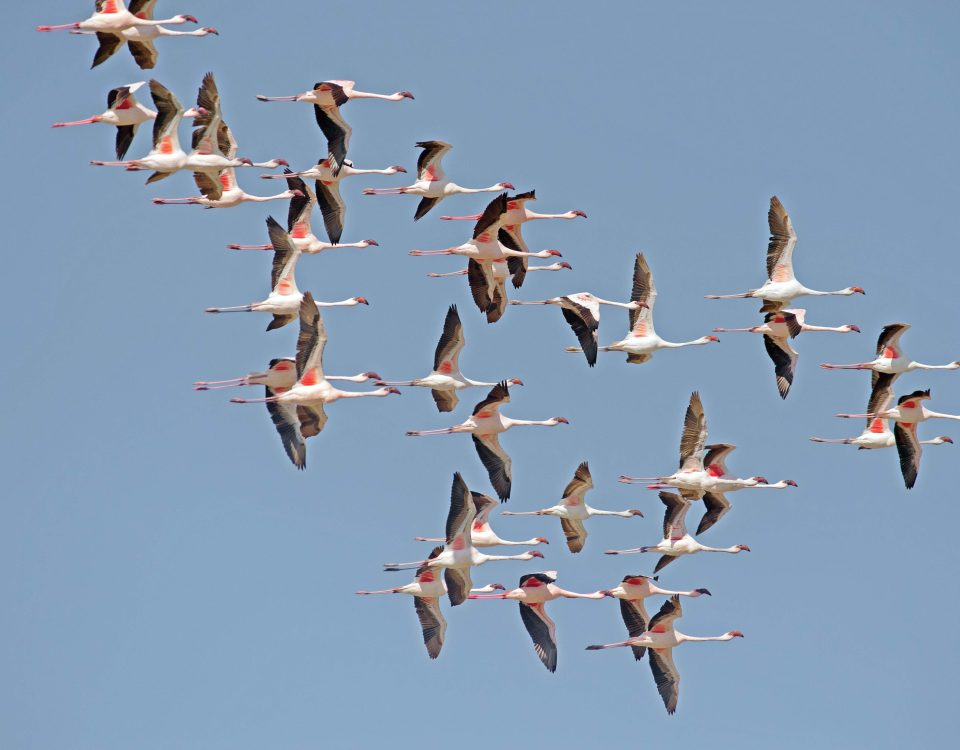[vc_row][vc_column][vc_column_text]
News Adventure Birding Books Conservation Culture Destinations Flora Seasons Things to Do
[/vc_column_text]
December 20, 2024
The Etosha pan is a large endorheic basin, covering an area of approximately 4760 km2 and stretching some 120km from east to west and 55km north to south. This area is so vast that it is visible from space. Most visitors and tourists to Namibia’s flagship park are greeted with stunning sights of the vast, shimmering expanse of the pan as they navigate their way along scenic routes. Every now and again, specks of wildlife can be seen in the distance, traversing parts of the pan, leaving one pondering the fact as to what could possibly draw them to such a seemingly barren, desolate wasteland.
December 2, 2024
Ongava is one of Namibia’s premier retreats, seamlessly blending luxury and comfort with spectacular wildlife sightings set against the natural beauty of the reserve. Situated adjacent to Etosha National Park, the extensive wildlife found here also makes it the ideal getaway for photographers. With animals ranging from rhinos, elephants and lions to smaller game and a colourful assortment of birdlife, it offers both seasoned camera enthusiasts and casual smartphone users the opportunity to capture stunning shots of Africa’s wildlife against rugged landscapes.
November 8, 2024
Join the citizen science initiative in Etosha National Park! Help researchers protect cheetahs and leopards by snapping and sharing your sightings of these iconic predators. Led by the Greater Etosha Carnivore Programme, this survey invites visitors to contribute photographs that will be analyzed using AI for individual identification, helping establish crucial population estimates. With each submission, citizen scientists aid in wildlife conservation and stand a chance to win a luxury stay at Ongava Game Reserve. Dive into this unique opportunity to make a meaningful impact on Namibia’s wildlife conservation efforts!
January 5, 2024
Photography Feature: Abner Tshikalepo Simeon’s work as a guide for Wilderness takes him around the country. Along the way he captures exceptional photos of the incredible landscapes, wildlife and people he encounters. Equally remarkable is his career.
September 28, 2023
Shipwreck Lodge: A Journey Through the Untouched Beauty of Namibia's Skeleton Coast | Witness Rare Wildlife Encounters, Stunning Landscapes, and Cozy Cabin Retreats
September 27, 2023
My infamous career as a bird watcher started when I was 24 years old. A very dear and kind friend invited me to go with him and his wife to Ndumo Game Reserve in Northern KwaZulu-Natal. If they told me beforehand that this will end up in a birding trip, I would have refused point blank.
September 27, 2023
At first I am somewhat nervous about driving on the left side, but luckily this fades after a while. The road is long and straight. Around sunset, we marvel at the colours of the landscape – pastel and gold!
September 27, 2023
The waterway leads us to Serondela, a classic safari lodge accessible only by boat. En route to our luxury destination from Kasane the river is buzzing with houseboats, tourists on cruises, fishermen and service vessels.
September 25, 2023
Summer in Namibia is the festive and holiday season. It is the time of a great trek northwards from the capital on the central highland, to traditional homes and families or westward to the cool Atlantic coast and social gatherings, big sporting events and lazy beach days.
June 21, 2023
Chris Botha is a Namibian-born photographer whose love for photography has made the world around him come alive. He captures the beauty of his surroundings and makes life seem slow, steady and free. Chris’s approach to photography is driven by his love for the creative process and the thrill of the chase. He says, “Anything is interesting if you look close enough. The more mundane, the more exciting the challenge to find that interesting shot.”
March 7, 2023
Explore the photographic journey of Marc Springer, from film darkrooms to capturing Namibia's breathtaking wildlife and landscapes. Embrace the evolution of photography and the privilege of witnessing animals in their natural habitat. Preserve the beauty of Namibia for future generations.
December 5, 2022
Discover the captivating world of southern Africa through the lens of Evan Naudé, a passionate travel journalist and photographer. With a decade of exploration, he unveils hidden stories, unique people, and stunning landscapes.
September 1, 2022
Toast Coetzer is a Cape Town-based travel journalist best known for his long association with the popular South African travel magazine Go (and its Afrikaans version, Weg). “Because Namibia is such a popular road trip destination among South Africans, I’ve been lucky enough to visit the country at least once a year, sometimes even two or three times,” Toast says.
September 1, 2022
Photography, when in Namibia, is of utmost importance. After all you need to capture the beauty of this picturesque country, be it with your cell phone or your camera with a 2000 mm lens. There are many wild and wonderful things in Namibia, so you should be fully prepared to have lots of space on your memory card, and your co-passengers should also have a full memory card of patience. You can repeat and relive so much of your trip when going through your photographs back home, but please refrain from boring your best friends with a slide show, keep it for your not so best friends/enemies.
June 1, 2022
I wonder if any of those pioneers in the early 1900s ever saw Barlow’s
Lark (Calendulauda barlowi) at Pomona, or the Dune Lark (C.
erythrochlamys) in the dunes near Lüderitz? Looking at the barren
‘killing fields’ those diamond hunters left behind as memories for
later generations, I doubt it very much. I suppose the diamond’s
blinding effect on your eyes has the same effect on your mind. In
the end, it’s the larks that are still around, and not those diamond
hunters.

